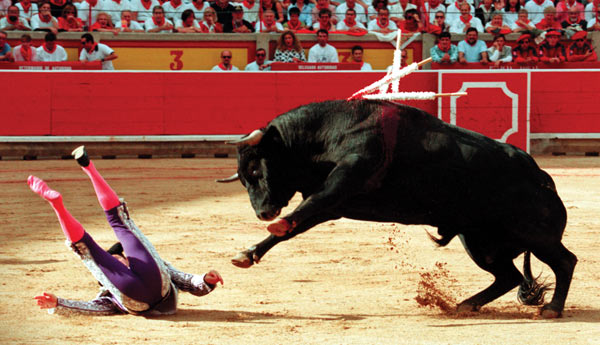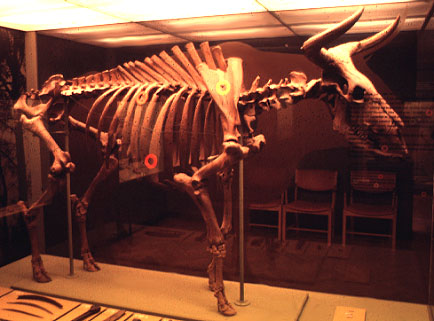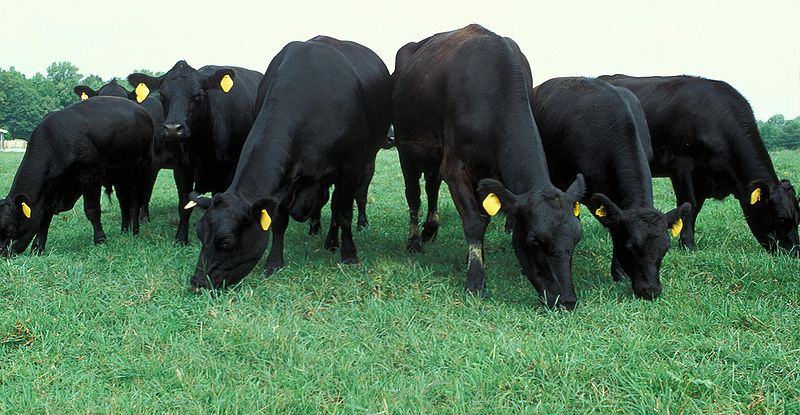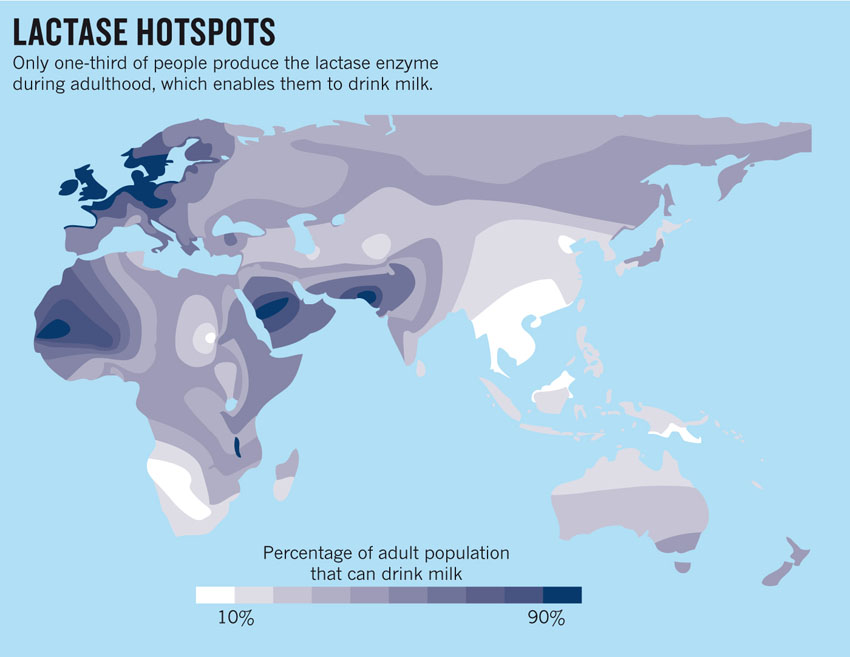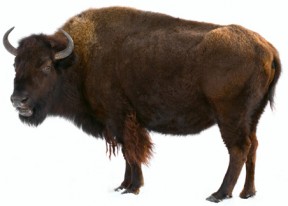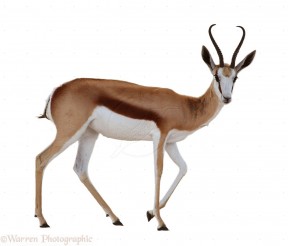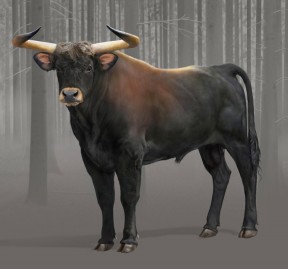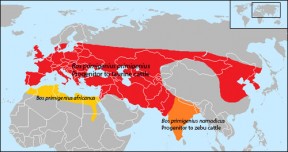The evolution of the modern domesticated cow begins with the subfamily Bovinae, commonly known as bovines. Several extant and extinct genera make up this subfamily (International commission on zoological nomenclature, n.d.):
- Bos (auroch, yak, and domesticated cattle)
- Tetracerus and Boselaphus (antelope)
- Tragelaphus (antelope-like)
- Bubalus (buffalo and anoa)
- Syncerus (African buffalo)
- Pelorovis (giant buffalo)
- Bison
- Taurotragus (eland)
- Pseudoryx (rare saola)
The domesticated cow is nested within the genus Bos, a genus that consists of eleven extant and extinct species. We begin our story with the likely progenitor to all species in this genus: Bos acutifrons, which became extinct roughly 1.5 million years ago in modern day India (Pilgram, 2008). It is postulated that the emergence of grazers such as Bos acutifrons and the auroch (the progenitor of domestic cattle) stems from the cold climate present in Asia roughly 2.5 to 5.5 million years ago and perhaps earlier (Maas, 2011). This climate has been associated with the formation of expansive grasslands that selected for herding behavior along with either swiftness (for evasion of predators), size and strength (for defense against predators), or a combination of the two. Hence the emergence of the speedy antelope, the massive bison, and the auroch—which seems to be a successful middle ground between swiftness and bulk. See the below images depictions of the two likely directions of selective pressure exerted by open grasslands.
With high visibility and few places to hide, there appear to be inherent selective pressures against populations surviving in grasslands. However, the high prevalence of open spaces during the Pliocene likely gave animals no choice but to roam them. Because of the inherent riskiness of living in open spaces, it is no surprise that anxious behavior is automatically initiated in many animals simply by placing them in open spaces (Mouse open-space behavior, n.d.). Grazers, therefore, have become either highly social (as with the auroch), depending on the herd to mitigate anxiety, or have developed extreme flightiness to escape predation (see this video).
The Auroch: Modern Cattle’s Wild Progenitor
The earliest known specimen of the auroch is dated at roughly two million years old in India. Over the course of the next 1.75 million years, aurochs migrated across Asia and into Germany by 275,000 years before present (Maas, 2011).
Depicted in the above figure is the range covered by the auroch during its existence, beginning with India roughly two million years ago. Each color designates a different subspecies. Bos primigenius primigenius was the wild progenitor to modern taurine cattle (i.e., European cattle found in most of the West, including North America). Bos primigenius namadicus was the wild progenitor to modern zebu cattle (i.e., Indian cattle found in much of the Far East). Bos pimigenius africanus was anatomically very similar to European aurochs.

